#an ancient hunt last epoch
Explore tagged Tumblr posts
Text

#an ancient hunt last epoch#an ancient library hidden within a mystical forest#hidden ancient cities
0 notes
Text
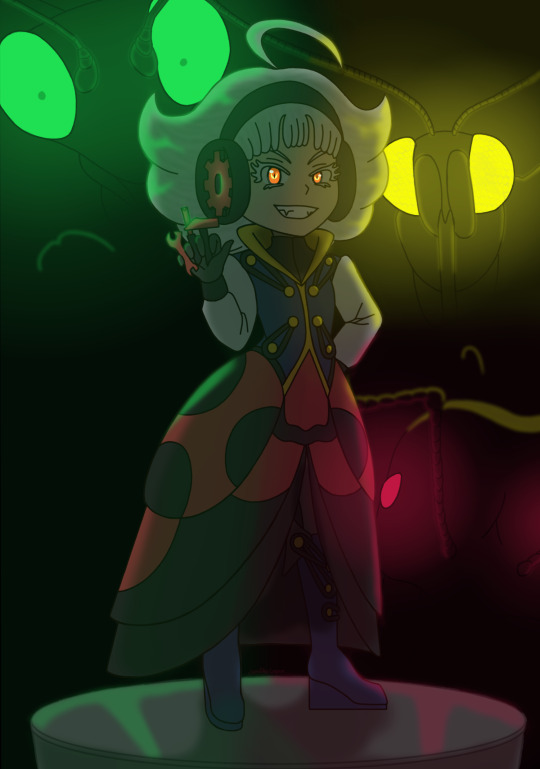
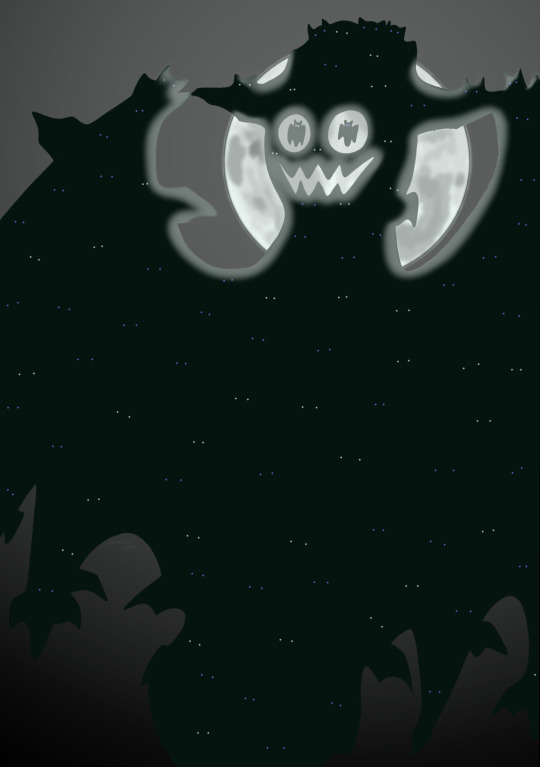
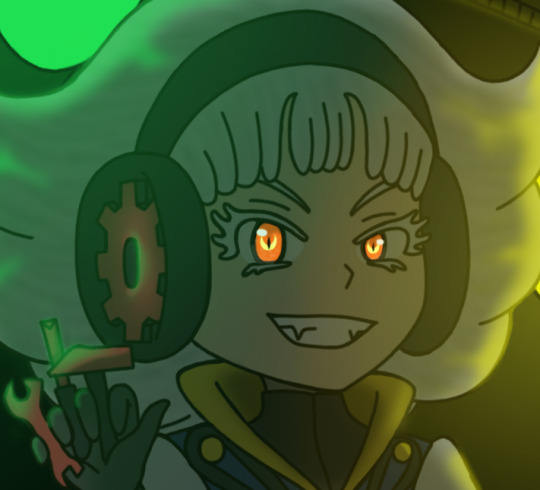
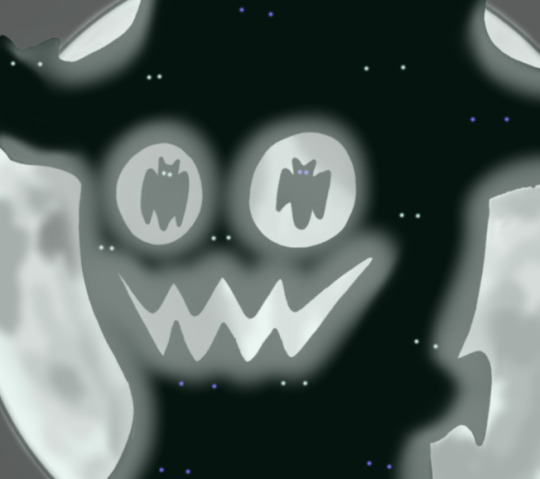
Vampire Gear and Myth
Warning: long post!
Dinois Velgear
Species: Vampire
Age: around two centuries
Family: Velgear Clan
Titel: Inventor, Warrior of Velgear
History: Born into the Velgear Clan, the most technologically advanced Vampire Clan and most dominant force of the world, renowned for their beauty and incredible size. She should have had a great life ahead of her, with her future laid to her feet. However, her physically smaller status has made others belittle her since she was just a toddler. Even her parents, though loving, never grew out of the state of treating her like a child. Despite dealing with a lot of discouragement from her society every single day, she manged to not only become a minor inventor but also a part of the Velgear Warriors. Though still very low ranked, she tries everything to make her superiors not only perceive, but also praise her. She would do anything for her abilities to be recognised.
Sukai Batto
Species: Ancient Vampire
Age: Epochs
Family: Themselves
Titel: Sky Eye, Demon of Knowledge, Nightmare of many
History: The last of their kind of Ancient Vampire, capable of forming a hivemind to protect themselves. Their ability to assemble and disassemble allows them to watch the world and its changes with no secret left untold. Many fear them for their powers. Especially once in formation as they use tactics of others against them. Using the knowledge they have gathered, they are able to psychologically hit their opponents where it hurts the most. With their high speed and individual reflexes it is almost impossible to hit them in a fight. Back in the day they were a benevolent source of knowledge. They were willing to share, until one spark of fear spread over the lands, leaving them secluded.
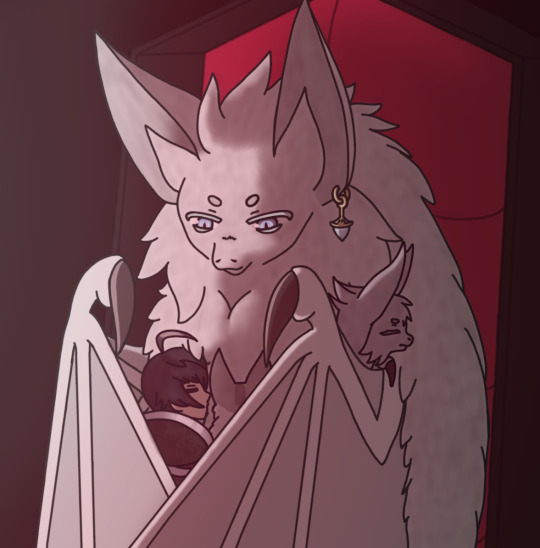
Since you like this AU so much, have the rest, some lore and some cuddly bats. :)
(If or when I'm going to revisit this I will probably change some things up, because I'm not too satisfied with all of this, but I have to stop at some point. ^^')
Phaser Ryugu
Species: Vampire
Age: almost a millennium
Family: Ryugu Castle, Tremolo (brother)
Titel: King of the Ryugu Territory, Commander of the Dragon
History: His clan was wiped out when he was around a century old. Thanks to his parents, he managed to survive in the dungeons of the castle with Tremolo, in which his parents worked in. Since then, the barely adult had taken it upon himself to raise not only his brother but rebuild the castle. Still set in the old and severely outdated views of his former clan, it took him longer than necessary to collect outside vampires to actually join his course. Even then the trust was shaky at best. Until he protected his new people during another extermination, finally gaining trust and respect from those who had only followed him because he had given them shelter. Set on protecting those who now fully stand behind him, his focus on returning to clan life drifts further and further from his mind. Winning new territory, preparing to go out for war or hunting parties seem like a distant memory he no longer wants to associate with as he starts to even let humans and other species join his ranks, making the foundation he is standing on shaky once more.
Tremolo Ryugu
Species: Vampire
Age: eight centuries
Family: Ryugu Castle, Phaser (brother)
Titel: Prince of the Ryugu Territory, Head Guard of the Dragon
History: His clan was wiped out by an extermination of humans rebelling against vampires when he was barely two years old. He has no recollection of how life is like inside of a clan and since he heard stories from his brother while growing up, he is determined to restore the former glory of the Ryugu Clan. Supporting Phaser in politics and on the battlefield. His enthusiasm and sheer power of will brought him quickly to the top as the Head Guard of the Dragons, earning him respect from everyone. Outside the territory, people seem to be more aware of him, than his older brother. The talk of him being a better King is shut down by Tremolo every time it comes up. Still, it makes him wonder, why his brother is unwilling to return back to the life of a proud and strong clan. Gain influence and respect and maybe overthrow the currently reigning Velgear Clan.
Nyandestar
Species: Vampire
Age: Three centuries
Family: Ryugu Castle
Titel: Guard of the Dragons, Spy of the Dragons, Messenger of the Dragons
History: She was found abandoned and hurt by Tremolo after another extermination. Being well treated in the castle, she decided to stay and offer her services to those that saved her from her death. Tremolo offered up his services to train her, having seen her talent and survival skills, despite not knowing how to turn back into her humanoid shape. Something must have happened during the event, which almost brought her to deaths door, though she has no recollection of what it could have possibly been.
Manabu Sogetsu
Species: Human
Age: 16
Family: Ryugu Castle
Titel: Guard of the Dragons; Honorary doctor, cleaner and cook of the Ryugu Castle
History: Found abandoned by Phaser when he was just an infant. Having no knowledge about his biological family, he was raised by the Vampire, seeing him as a fatherly figure but would never admit to it. He and Nyandestar grow a fast sibling like bond after spending time together. She is also the one he asks to train her to be a useful asset to the Ryugu Castle and join the Guard of the Dragons. Though Tremolo made joining difficult, Manabu manages to pass the test with his chemical knowledge and fast thinking. Still far from reaching the ranks of the younger Ryugu, he trains hard to give back what the castle has given him.
Ange Kicho
Species: Human
Age: 25
Family: Karen, Liem
Titel: Self-appointed Abysskite Princess
History: Coming from a long line of ancient vampire hunters, hunting anything undead is deeply anchored in her veins. More so than the other three, she wants to clean the world of the foul pests that are vampires, using every tactic necessary to fulfil that goal. Although by far not as patient, once she has set her mind on things, there is nothing that can stop her. She has reached every goal she has set so far. Those vampires would finally know what it is like to suffer at the hands of someone else above them.
Karen Choha
Species: Human
Age: 28
Family: Ange, Liem
Titel: Self-appointed Abysskite Princess
History: Once a lonely girl wandering the forest, she was taken in and protected by vampire hunters, who raised and trained her. Fascinated by traps of all kinds, she made sure to teach herself in this craftsmanship to fight her enemies from a distance and in silence. While she does recognise that vampires are needed in the world to keep up politics and the balance of nature, she would not mind pushing them down a peck or two. After all, it would not hurt those snobs to know what it’s like, to lose almost everything they hold dear.
Liem Kokai
Species: Human
Age: 32
Family: Ange, Karen
Titel: Self-appointed Abysskite Princess
History: Once royalty, her family fell to vampires expanding their territory and getting betrayed by those vampires, who had claimed to protect her home. Near death, the last remains of a long line of vampire hunters took her in and brought her back to health. With her trust toward vampires broken, she devours everything the hunters and their books teach her. Educated in many ways, she is the tactician of the three and the one to come up with the idea to infiltrate the nearby castle. The stage for the next black moon is set. (Infiltration -> appearing too disruptive/dangerous -> getting kicked out -> having some overhear their "next plan" of infiltration -> lead the strongest far away from the castle and lure them to Sky Eye so they might kill each other -> go back to the castle and kill the chained vampires during the black moon (if followers were not killed by Sky Eye, have the place appear as if it were attacked by Velgear Clan (next target, as this was a test run)))
Black Moon
The time were vampires crawl from their territorial walls and rise to the sky. Many young and untrained ones lose consciousness and purely act on instinct during those times, becoming unrecognisable. Those older know the terror this could bring over the world and shake its balance, leading them to lock those in, who cannot control themselves. Though even when conscious, instincts still take over. Screams of bats will fill the night, with a lot less lives present in the villages, towns and cities. Many vampires do not recover from those nights and the guilt swallowing them after.
Leading Vampires
Loaded with the responsibility of carrying the lives of many species, especially those of their people on their shoulders, their subconscious alters their shape and appearance. These changes depend on their people and species in their territory and how well they consider the balance. While it appears as if their kind or ruthless nature would have any effect on it, it is the stress and subconscious thoughts alone that set off these changes. Descending from a long extinct species of pseudo-bats more closely related to humans, those ancient traits may be reawakened. It is possible to spot a leading vampire, who has physically reverted fully to their ancient form. Those are considered to be the best leading forces of the world. This type of thinking sometimes ends in a self-fulfilling prophesy with those, who worry, they might never be good enough. Even when they change, this rushed confidence might be their downfall, reinforcing the stereotype, as only those capable enough will actually survive these drastic changes and new set expectations.
Of course, there are those, who never knew the responsibility of a leader. Stress occurs in everyone, no matter their status.
#yugioh go rush#dinois velgear#fisher sukai#a deer draws#tw insects#i lied when i said i would do it over the weekend (i have no chill ^^')#i'm not writing this fully but if i did it would have multiple endings#one in which everyone except sukai dies and they're just like:#“back to our lonely cave we go and wait the next millennium to find someone who will be friends with us sky”#why do i like making myself sad?
11 notes
·
View notes
Text
Freia the Eternal
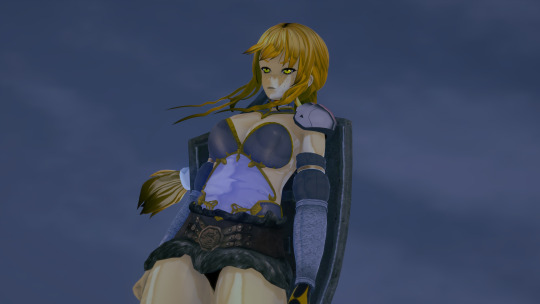
Freia the Eternal, the goddess that defined an era and the world to come.
Ruling for a hundred millennia, Freia was born out of the desperation of mortalkind.
To understand Freia, one has to understand how gods function in this world. Infinite in nature, each god is a manifestation of a concept or set of concepts and ideas. There can be extensive overlap between certain deities - the Archons rule seven elements of nature that also have had other gods throughout history. Certain gods can rise in reach and power, and the strongest among them ascend to a greate classification: a Greater God. There have only been four Greater Gods in the Tegarrian Lore. Irkathame the Scion-keeper, an ancient deity of a now-exctint species of octopus-like beings that ruled most of the galaxy millions of years ago; Adam El Asem the First Man, who created all of mankind and whose mistakes led directly to the birth of Freia; and Freia the Eternal, whose original purpose became buried under an epoch of corruption. The fourth god deserves a whole another post, so I won't mention her.
Freia began life as a minor deity, travelling across the world to help mortals with tasks they could not accomplish by themselves. These tasks were usually the vanquishing of monsters and other threats. She became the Goddess of many things. Goddess of Hope, of War. Of Love and Lust, of Crops and Famine, of Gold and Wealth, of Magic and the Afterlife (just like the irl Freyja), etc. All those concepts she still represents, even after her death.

However, Freia was born in the shadows of a devastating collapse of civilization. When Adam El Asem's million-year-long Empire came to a close, the very foundations of the world were left in shambles. A war among the Gods themselves raged across the universe, the devastation still felt well into the modern day, 400,000 years after the fact.
After the fact, a huge power vacuum was left open for anyone to grab. A certain Demon Ofnir and his Kingdom of Blood almost conquered half of the world; the Queendom of Sarthes Azura and her two patron deities provided a semblance of order after the First Rapture. An object, an Artifact of Creation was left unused. The Ring of Life, spread over multiples Runes that control all things living, dead, in-between and beyond. This was up for grabs, and Freia quickly began wielding it.
However, the Ring of Life was all but a trap, for a higher being - the Powers That Be - had corrupted it eons before.
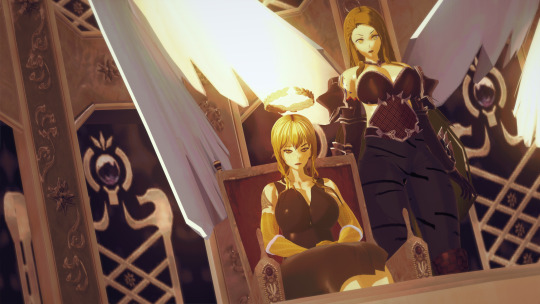
Freia with her daughter Promethea, the Angel of Death
The influence of the Powers That Be was strong. Freia grew distant.
Twenty sons she had with the last of the Fae gods; Dewuulf, the God of the Wild Hunt. Of these, the first of them became corrupted by It as well and had to be excised from history all-together. After this, a certain madness claimed Freia's mind. Of her original twenty or so sons and daughters, history only remembers seven of them: Promethea, the Angel of Death, was her Executioner. Godranni, the Weaver of Fate, was her oracle into the future. Aasir, the Red Khan, was her brute-force solution to any problems. Maistorm, the King of the Under-realms, was the only one allowed to perform necromancy. Ulaatan Castellan, the Hammer of Justice, was her perfect general. Kaedriel Mallacht, the Nightbringer, was her soon-to-be successor. Indoral Addarach, the Clockwork Disciple, was the brightest mind allowed to exist. Everyone else would be forgotten by History all-together.

Ms. Adalgard Lund, Emergency Director of the Dämmerung Foundation.
Freia's Golden Empire would soon crumble too. Driven to insanity by the whispers of the Powers That Be, she would end up shattering the Ring of Life itself. This brought an unpredecented age upon the entire Tree of Life - to the entire multiverse. An Age of Undeath.
The Goldenborn beckon for a bright future, but that will not be possible. Of thee, only seven will exist.
Faylane, you the Eternal Muse of Mankind, loved and wanted by all mortals, your presence must come to a stop. Ihnaros, the King of Sands, you have helped the Nightlord settle her lands and establish her rule, and for that I am eternally grateful; for she will forget you. Oljme, Prince of the Hunt, you who enjoy slaying beasts and protecting the wildlife, I must vanish thee. You will join your brother of whom you hold no memories, Audwynn, in eternal un-existence. To fight the war within, I must not falter, ye Forsaken Demigods, for all of Reality depends on it.
READING RELATED TO FREIA THE ETERNAL:
DCA-6000 - The Leytree of Freia the Eternal
DCA-001 - Dr. Elrod's Proposal - The War in Heaven
DCA-5031 - The World Serpent
26 notes
·
View notes
Text
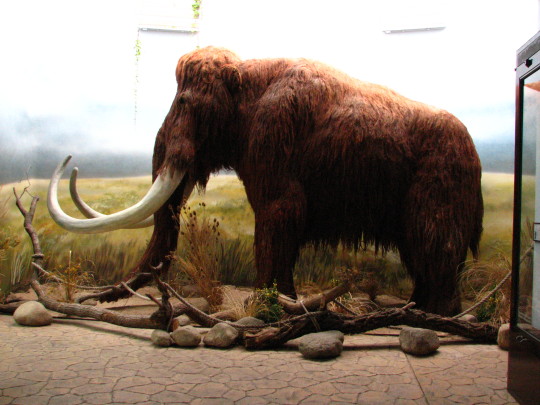
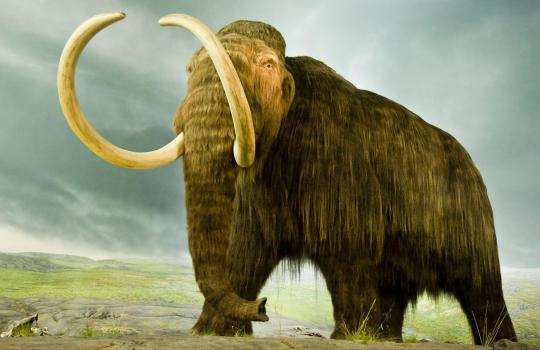

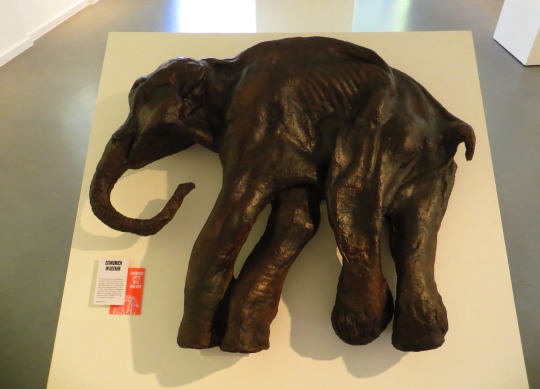
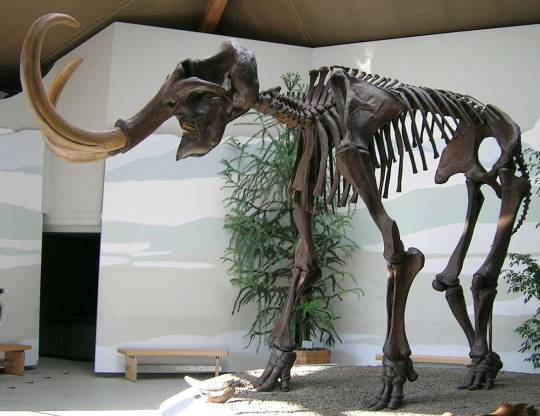

Woolly mammoth (Mammuthus primigenius)
(temporal range: 0.40-0.0037 mio. years ago)
[text from the Wikipedia article, see also link above]
The woolly mammoth (Mammuthus primigenius) is an extinct species of mammoth that lived during the Pleistocene until its extinction in the Holocene epoch. It was one of the last in a line of mammoth species, beginning with the African Mammuthus subplanifrons in the early Pliocene. The woolly mammoth began to diverge from the steppe mammoth about 800,000 years ago in East Asia. Its closest extant relative is the Asian elephant. The Columbian mammoth (Mammuthus columbi) lived alongside the woolly mammoth in North America, and DNA studies show that the two hybridised with each other.
The appearance and behaviour of this species are among the best studied of any prehistoric animal because of the discovery of frozen carcasses in Siberia and North America, as well as skeletons, teeth, stomach contents, dung, and depiction from life in prehistoric cave paintings. Mammoth remains had long been known in Asia before they became known to Europeans in the 17th century. The origin of these remains was long a matter of debate, and often explained as being remains of legendary creatures. The mammoth was identified as an extinct species of elephant by Georges Cuvier in 1796.
The woolly mammoth was roughly the same size as modern African elephants. Males reached shoulder heights between 2.67 and 3.49 m (8.8 and 11.5 ft) and weighed up to 8.2 metric tons (9.0 short tons). Females reached 2.6–2.9 m (8.5–9.5 ft) in shoulder heights and weighed up to 4 metric tons (4.4 short tons). A newborn calf weighed about 90 kg (200 lb). The woolly mammoth was well adapted to the cold environment during the last ice age. It was covered in fur, with an outer covering of long guard hairs and a shorter undercoat. The colour of the coat varied from dark to light. The ears and tail were short to minimise frostbite and heat loss. It had long, curved tusks and four molars, which were replaced six times during the lifetime of an individual. Its behaviour was similar to that of modern elephants, and it used its tusks and trunk for manipulating objects, fighting, and foraging. The diet of the woolly mammoth was mainly grasses and sedges. Individuals could probably reach the age of 60. Its habitat was the mammoth steppe, which stretched across northern Eurasia and North America.
The woolly mammoth coexisted with early humans, who used its bones and tusks for making art, tools, and dwellings, and hunted the species for food. The population of woolly mammoths declined at the end of the Pleistocene, disappearing throughout most of its mainland range, although isolated populations survived on St. Paul Island until 5,600 years ago, on Wrangel Island until 4,000 years ago, and possibly (based on ancient eDNA) in the Yukon up to 5,700 years ago and on the Taymyr Peninsula up to 3,900 years ago. After its extinction, humans continued using its ivory as a raw material, a tradition that continues today. With a genome project for the mammoth completed in 2015, it has been proposed the species could be revived through various means, but none of the methods proposed are yet feasible.
17 notes
·
View notes
Text
"Motherly Ropsamaniya, she is besieged on all sides, not by the Norskiye, not by the Sigmaryens, and not even by the Trolle and Orkmen, instead she be assailed by those bands of Trogii whose numbers are without end, I hope that one day the forests shall be cleared of their lot."
Account of Armaril Aleksi, Roppsmenn Bandit of the Clan Venush
The Kaempas, Traitors of the Dawn
Across the ancient expanse of northerly Remwall, composed of the sisterly territories of Norsca and Kislev, are nations that are inhabited by a variety of equally elder peoples, more so than the likes of mankind.
From the dour clans of the dwarfs to those dysfunctional gangs of greenskins and trolls, the northern reaches of Remwall are claimed proudly by such warring cultures, their belligerence thus enshrouding the region within an eternal war of supremacy.
However, betwixt the bloodshed of such murderous folk, there resides an animalistic race that has long predated all other denizens of the frigid North.
While not a singular folk with any predominant nation among them, these peoples are able to recognize one another for their shared heritage and customs, and thus refer to themselves as the Kaempas, the kindred-wyrms.
Possessed of ophidian origins that lie towards a forgotten epoch, as such their collective culture is distinct from the likes of those similarly bestial followers of Anathema.
For as opposed to the Gorkin who waylay civilization, preying upon the desperate and the damned, the Saurians of northern Remwall are viewed through a separate, yet still monstrous reputation across the lands endemic with their presence.
Written in the annals of the Roppsmenn and the Ungols, of the Gospodars and the Norscans, it is said that whenever Chaos may engender its corruptive essence upon the tundras, these reptiles march forward bearing martial intent in their step, unrelenting until the daemon has been at last vanquished.
Their many battles with the foul creatures of Anathema have gone down as the talk of legends all across fair Kislev and blighted Norsca, impairing great fear and even greater respect for the Kaempas among their warm-blooded neighbors.
For while they be a reclusive bunch, held up within their evergreen villages and mountainous fortresses, these Saurians are yet willing to give up on the world and its inhabitants, ready to fight until the last embers of their spirit become blown out by the chill of Chaos. It is this inclination to hunt those entities of the adjacent dimension that ultimately displays the origins of the race straight and center.
For in truth, the Kaempas are all that remain of the Old Ones' great empire within this region of the Old World. Ruling those elder cities of silver and stone, their venerated magician-kings remain unchallenged by the return of fetid Anathema, continuing to uphold those sacred magics that had once shaped the very earth itself.
Even among the more uneducated of their kind, of the mundane warriors who wander the taigas and steppes with belligerent abandon, they too dedicate themselves to the eradication of all things that are unsightly to the vision of the Great Plan.
This subservience to the Old Ones began upon the arrival of a golden fleet from the heavens, such alien expeditionaries then vassalizing the likes of the ancestral Kaempas through a show of technological might. Thus were these Saurians counted among the earliest citizens of their new global dominion, receiving entry as supplicants beneath the benevolence of their new masters.
By the will of those gods ever sublime, the Kaempas then erected a multitude of lavish temples across their frigid homeland, doing so with the utmost dedication in their work. Surrounding these newly established points of worship, did cities begin to emerge upon the steppes of the ancient North, showcasing the peoples' need to surround themselves in the worship of their idols.
It was for this devotion to the new gods, alongside their proximity to the great ice-capped wastes, were the Kaempas thus chosen as to toil directly under their stellar lords, undertaking the construction of the Polar Gares.
As consequence, the Kaempas waged countless wars with the likes of those dissident kindred and their Dragon Ogres masters who stalked the polar deserts, their homes being always under threat by those warriors of Anathema.
As such, the Old Ones saw to it that their followers be taught the many magics that constituted their power, elevating the Kaempas from the world of benign witchery, and into the ranks of sacred geomancers.
So began a golden age for these northerly Saurians as they would then seek to benefit greatly from their newly acquired knowledge not only through methods of warfare, but as well enacting great civil projects the likes of which could be scarce replicated even by the modern Kaempas.
They then spread this knowledge across the decentralized empire of their gods, becoming valued artisans, architects, and laborers within the similarly vassal states of their reptilian ilk, serving the differing alien pantheons across the earth.
However, such tutelage would prove itself to be a slight fumble on part of the Old Ones, for their Kaempas grew ever arrogant in the face of their divine mandate, eventually leading to the war of the First Revolt.
This event shook the very core of their dominion nigh-infallible, for it was unheard of for any mortal to dare rise up against the will of the Old Ones. One by one, every city endemic of the Kaempas would march their armies defiantly against the domains of their alien overlords, seeking to upend the laws that confined them to the roles of menial servitude.
The rebelling Saurians were, of course, nigh-totally destroyed at the hands of their vindictive gods, their proud homeland reduced to a smoldering ruin by the might of the golden fleets. Such brutality served as a warning to not just the Kaempas solely, but to all others subject beneath the Old Ones who would dare seek out their sovereignty away from the rule of their one and only masters.
The punished natives of the land renewed their allegiances to the gods, fearful of their wrath lest they once more invite armageddon into their households.
Only this time, they were revoked of the privileges they once enjoyed, and their position within the global hierarchy now diminished from where they once stood, seen as no more than middling slaves in the eyes of their neighbors.
Even their holdings had lost the grandeur of their initial designs, their cities now without walls to protect them, their construction thus forbidden by the cruelty of the Old Ones who sought to declaw their mortal pets.
The troubles of the Kaempas, however, only grew worse from there, as the Polar Gates would come crashing down either by some faulty design on part of none other than themselves or through the cunning machinations of Chaos and its malignant followers.
It matters not really, for soon the Old Ones had fled, leaving their followers behind to suffer the onset of the daemon hosts immeasurable. Among the first victims of these terrible armies were of course the Kaempas who lived closest to where the Polar Gates were to be ordained, spreading panic across the population at large.
While their defenses were too meager as to protect them from this rising danger, among the survivors of the First Revolt there were still those individuals who retained the mighty arts of geomancy, thus allowing the Kaempas to hold back the otherworldly tides for a moment's grace, giving time for the rest of their stranded empire to begin mobilizing across the globe.
Though these great magicians were soon to fall, the power that surged through their bodies being too much as to handle, their people would persevere throughout this blighted storm just as all the other Saurian races would.
They thus abandoned the plains of their homeland, migrating to the mountains and forests, to the caverns and wetlands, there they would lead a guerilla war against the murderous throngs of daemons, refusing to capitulate so easily.
When at last the Asur conceived the mighty Vortex and so the rift between worlds was then sealed, the Kaempas were all but gone, their numbers depleted so thoroughly that only a scant few primitive families remained, hidden among the mountains of Norsca and Kislev.
Their absence would thus lead to the lands they since inhabited to be settled by those warm-blooded races, from the men, halflings, and ogres, to even the likes of the elderly elfs and dwarfs.
Soon there came the might of the fungal greenskin and trolls, of which would then forever plague the lands they had come to inhabit. Thus, for generations were the Kaempas confined to their mountainous homes, forced to be content knowing that they would remain there for the longest time, forcing them to adapt within the earthen dark of the mountains.
It was only recently did their presence become once again known throughout the lands of Kislev and Norsca, their return bearing different meanings for those differing peoples they encountered.
Though not a singular nation with a united goal in mind, collectively the Kaempas have grown ever bolder and more dangerous when met by their foreign neighbors. They send forth their armies from the misty peaks that dot the land, destroying those warmbloods who dare encroach upon their remaining territories.
Commanding terrible storms, they wash over the villages of those intruders, leaving behind sallow marshes in their wake, ones which they quickly claim for their own settling. For this they are reviled, seen as no better than the forces of the murderous greenskins who are belligerent seemingly for no purpose other than to wage war.
Regardless, the Kaempas themselves hold no care for the opinions of their neighbors, knowing well that the lands of Norsca and Kislev rightfully belong to them.
Edit: I Will be soon working on another post for the rest of the Saurians, alongside a general summary of the Saurian species itself.
Upcoming Cultures:
Skogi Taipanpama Yau-Kuai Mogoibaser Nyokabinad Azremite Nagaraja Kapahito Zumahas Nanahesa Sugelandra Tliyisht Tapotobo
0 notes
Text
Human Impact on Megafauna Extinction Revealed in New Study

In a study from Denmark’s, Aarhus University ECONOVO center, researchers reveal strong ties that support the argument that humans hunting played a huge role in wiping out megafauna in the last 50 000 years. This discovery casts doubt on previous assumptions that climate shift was the main cause of these extinctions and opens a new page in the study of the interactions between early human beings and prehistoric ecosystems. Extinction Crisis: Human vs Climate influence It proves that at least 161 species of megafauna, where mammoths, mastodons and giant sloths among them, died out because of the people and their influence, including hunting. Prehistoric megaherbivores were 57 while currently to them are only 11 and these remaining species are also endangered. Bill Abbott, CC BY-SA 2.0 https://creativecommons.org/licenses/by-sa/2.0, via Wikimedia Commons Climate Change's Lesser Role The late Pleistocene epoch stretching from 130,000 to 11,000 years ago involved the major climatic shifts which impacted the world’s plant and animal populations. However these changes were affecting more the large animals especially the megafauna, without affecting the major mass extinction. This was not the case with previous ice ages and interglacials where human influences were not as catastrophic as this one to the megafauna. Evidence of Human Hunting Despite the great differences in climate, factors related to humans other than climate alter have been supported by archaeological evidence as having played roles in driving megafauna to extinction. Studying traps meant for large animals, and isotopic research on human kinships and relics, imply that early man killed and ate megafauna. These hunting practices were particularly efficient, pointing out large body size of mammals, which were sensitive because of long gestation period and slow rates of maturity. Global Extinction Patterns Non-surprisingly, the megafauna species went extinct in different ecosystems including tropical rain forests and artic regions. These extinctions occurred when anatomically modern humans evolved to Neanderthals and other creatures or when they evolved from them, definitely linking the megafaunas’ demise to the anatomically modern humans. Expert Perspectives Professor Jens-Christian Svenning, lead author of the study, underscores the study's significance in understanding Earth's ecological history: ‘Human hunting finds, for the first time, that climate change was not the key factor contributing to the extinction of megafauna species over the last 50 millennia,’ study author Dr Michael Wesley said. The conclusions made in the context of this study are groundbreaking for the comprehension of the megafauna extinctions, stressing on the human impact as the primary cause of a significant decrease in the Earth’s biosphere’s diversity. Thus, based on these historical interactions between people and animals, one can see the need to implement these observations in today’s approaches to conservation in order to save the existent large species and their habitats. More studies are required for one to fully understand effects of human activities on the incident ecosystems and the ancient diversity. Thus, continuing the protection and management of today’s megafauna species and their habitats from human impacts and climate change is imperative. Read the full article
0 notes
Text
Magnus Archives - First Impressions (151-175)
We’re almost there, gang. Out of the Lonely and into the Eyepocalypse we go! Blah blah I had 75% of the series spoiled and am jotting down my thoughts, you know the drill.
EP 151 (Big Picture): - OH SIMON??? - okay okay Simon's kinda funny, you go you funky little sky grandpa - Martin Tell Her The TRUTH EP 152 (A Gravedigger's Envy): - oooh another ancient one - hey that's terrifying wtf - can someone please comfort jonny boy good lord EP 153 (Love Bombing): - Idk why the cult ones freak me out, maybe because cults are real? - oh god what's gonna happen to that dog - I literally just made my dinner with white wine vinegar that's a little old are you sHITTING ME - GIRL GET OUT OF THERE WHILE YOU HAVE A CHANCE YOU KNOW SOMETHING'S OFF - AYYY THE HUNTIN' GANG - tbh it was weird that they helped him even though they knew he wasn't human actually - DAISY!!!!! - Jon can you chill w/ the sass if you're not gonna help - Okay I'm gay but Daisy Growl Hot - Two dying monsters trying to reconcile their humanity, this is sad I hate it here EP 154 (Bloody Mary): - oh god it's This Episode I've been dreading it poor Eric - g o d Gertrude sounds so upset - I would die for Eric - "Eric I'm gonna count to ten and you're gonna tELL ME HOW YOU QUIT" - I'm already crying good god - "he needed me" o w - MARTIN GOT TO SAY FUCK!!!!! - O U C H - i am so upset FUCK this podcast - the catalogue of the dead is just the Delano-Keay family album EP 155 (Cost of Living): - CALL HER OUT JON - Tova, to this doctor's heart: it's free real estate - A FUCKING C H I L D?????? - ah yes, some more DIY surgery, who needs doctors when you have knives? EP 156 (Reflection): - ayyyy adelard how are ya - oh fun flesh time - oh? extinction? - also that was gross what the fuck - M A R T I N EP 157 (Rotten Core): - go save Martin before I cry - ADELARD!!! - ah no, I'm gonna miss this dude he was kinda cool - this hits different in corona times - okay this is actually pretty gross wtf - Martin's lonely because he chose to be, Jon is lonely because everyone hates him, poetic cinema EP 158 (Panopticon): - Ah Shit Here We Fucking Go - OH WHAT THE FUCK NOT!SASHA???? - AYYYYY THERE'S JONAH MAGNUS WELCOME HOME RAT BASTARD - uh oh bye bye Gertrude Time - mom and dad are fighting to be Martin's favorite parent lmao - no not the promise :C - Martin is the brain cell, he really just played both these men like kazoos - gdi Peter give me my boy back EP 159 (The Last): - hi I am Sad - Marto blease just go with the tired eyeball man - "i see you" MY B O Y S EP 160 (The Eye Opens) - oh lord here we go - at least we get some Jonmartin conversation - Monologue Time! - Jon: can I just say, from the bottom of my heart...my bad EP 161 (Dwelling): - welcome to the apocalypse bitches - FINALLY i've been waiting for these tapes for my entire life - TIMMMMMM! SASHAAAAA! - Elias being a normal person is unsettling - ALL THE EYE JOKES gdi I refuse to simp for eyeball man - THE JARRING "ARCHIVIST" I SWEAR TO FUCKING GOD - "If I wish for all of you to go away do you think it'll work?" well it worked on Tim and Sasha - Elias: I'm a cool boss, I can drink wine - the image of Jon just huddled on the couch with a bag of tapes and listening to them over and over is so sad - sorry Gertrude no Sasha, just a sad little man - thank u for the powerpoint Gertrude - JON DON'T SNAP - i love them so much your honor EP 162 (Cosy Cabin): - GERRY GERRY GERRY - okay Gertrude and Gerry are adorable I love goth boy and his badass grandma - Gerry, ever the pragmatist: but what about TAXES gertrude - Tim and Sasha interacting is the sweetest thing ;_; - oh this is AFTER the hookup lmao - OH WAIT Sasha canonically knew about Danny??? I didn't know that oof - Oh Jon's getting a phone call I suppose - Jon's trying so hard to be dramatic and Martin's like "okay bitch grab ur backpack and lets go" EP 163 (In The Trenches): - "Tell everybooooody I'm ooon my waaay, new frieeends and new plaaaaces to seeeee" - YESSS LET MARTIN CURSE OVER THE GUNSHOTS AND BAGPIPES - "Martin can you stand over there and cover your ears while I cast Eldritch Ramble" EP 164 (The Sick Village): - another one that hits different in corona times - I hate the word soupy - what in the midsommar - if you can't find your own statements, DIY your own - Martin: fuck u Jon, Helen's my friend now - Martin: can I get an Uber, can I PLEASE get an Uber EP 165 (Revolutions): - this is my friend's favorite episode so I'm excited - oh circus music gross - THE RHYMINGGGGG OH I LOVE THIS - my arms are sore from happy stimming at this audio oh my god - SHUT UP JON IT WAS A GOOD POEM - GET HER ASS JON - is that our first "Ceaseless Watcher"?? I think it was! - Jon: Level Up! - Martin: that's hot EP 166 (The Worms): - HELL YES JON SAID FUCK - oh worm? - Martin answer your damn phone - awww Martin don't doubt yourself :C EP 167 (Curiousity): - Fiona: lmao watch this -passes out- - oh I didn't realize Eric was one of the OGs, their conversations make more sense now - Michael :c - Gertrude you got played like a fiddle damn EP 168 (Roots): - jealous Martin lmao - Jon just tell him why you woke up that would probably solve this - As someone who also freaks out about every little twinge this episode felt targeted EP 169 (Fire Escape): - desolation time? desolation time. can't wait to walk through hell - so aside from Smirke's 14 we have the 3 additional fears: the Extinction, the Scotland, and the Landlord - oh this one is terrifiyng i love it - OOOOH the "jons" slowly fading in was really clever - G O D martin sounds so defeated poor boy EP 170 (Recollection): - Martin finding tape recorders is the cutest thing - Oh fuck are we in the Lonely oh shit - this is so disconcerting i love it - someone get this man a better chair EP 171 (The Gardener): - Martin: damn that's a lot of bones - oh not THIS dude again I can barely understand him oh my GOD - well that was interesting EP 172 (Strung Out): - oh web? - oh this is sad shit - I think this is one of the worst domains yet for me personally this sounds like hell - g o d the web makes my brain hurt blease Jonny I'm stupid EP 173 (Night Night): - oh dark? - oh so the darkness is just the apocalypse daycare? nice - oh and this tween runs it, nice - Jon: are you SURE you want me to kill this middle schooler? - wow this is depressing EP 174 (The Great Beast): - oh hunt? - oh vast? lmao that's what i get for assumptions - Martin just wants to kill a man is that too much to ask someone give him a gun EP 175 (Epoch): - ex...tinct...ion? - “Peter was right” no FUCK YOU I refuse to give Peter any credit LOOK ADELARD WAS RIGHT, Adelard Decker laid the BLUEPRINT - poor Jon he's gettin these hard-hitting google searches - Basira and Daisy?????? OH WAIT THAT MEANS OH NO
5 notes
·
View notes
Text
a young dog with sharper teeth
A dog-fiend bred to bite will close its teeth around the hand. In another time, another place, they would have kept one such tied and muzzled. Once it was the stick that it cowered from. Now the electric collar, the boundary established by remote.
Run, run, and make a show of the hunt! An accidental squirrel breaks its bones against the jaw. It is so small that there is no blood running down the dog-fiend’s maw.
Better this than one ancestor’s fate — canines that were meant to shred shattered to make a dint, molars ground to smoothness on the rust-iron edge of an immovable chain.
It is not this memorial-image that the beast inherits. Fierceness comes to the fore by renewal of an ancient act. The body and the mind, which is also the body, do not so easily forget. Before this one so cruelly tied, a score of fore-mothers howled joyful music, tearing out the round bellies of bears.
Cousin wolf, who was their elder and their enemy, has retreated into the taiga. It inhabits the places that the echoes of the barking do not reach, these rare and few places.
The shock does not begin as a shock, but a buzzing. A warning, rising into discomfort. The further it exceeds the ordained bounds, the greater is the bother and the pain, the nerves involuntarily jerking. It runs back until the collar is only a collar, and then it sets out again. The battery is new — it can maintain the shock for a long time, report its whereabouts for a long time.
A deer marks a path and the dog-fiend follows. Alone, it cannot take it. But it does not know this yet, and besides, the delight is in the chasing. The buzz alerts the hind and it bolts, and the dog-fiend follows after.
It runs until its lungs are raw, and the blood in its head near to boiling. Its legs do not touch the ground in its flight. At this point it can neither see nor hear beyond the buzzing, but it is either do this or die. There is no return to life behind the invisible fence, for there is no life behind the invisible fence. It has tasted meat of its own making, incomparable to the cold canned goods ground by man’s machineries.
The dog-fiend trips headfirst into the brush and it rights itself, acid burning through the muscle. Precious seconds of advantage for the hind, but it can be regained, its appearance a blessing and a promise. The corners of its mouth are foaming when it bites on the hind’s tail. They have been running for a year and a day, and the culmination of it lasts for an instant. Its jaws open like so, and the hind is gone but for the leaves that rustle for an epoch longer than it took for it to vanish.
Then there is silence.
The perimeter is broken, and the collar is again a collar. It will come away easy when the fat around the neck is shed. Well and good that it has enough of it yet — it will serve as it adjusts, as padding for the first failures of the hunt. There is life yet, be it long or brief, to make a decision. To live alone or to seek for its cousins, that will take it in or apart. The blood of the lungs stains the foam that it spits, but the heart, for the first time, is glad.
37 notes
·
View notes
Text
I dreamed I was in charge of an exhibit in the zoo. So far, so unsurprising, I visit often enough. It was a human exhibit, though. Neolithic civilization, with people employed to live there and actually build that civilization.
We started with three, I oversaw the hiring process and did some interviews myself. Many fans of youtube channels like Primitive Technology etc were applying, but couldn't tell the difference between a hand ax and a stone spear point. I don't remember the two people we hired, but the third was inexplicably a seven year old child.
There was a bit of a scandal over the long hours and the educational value of the exhibit in general, but for some reason none about the child labor. The first week, they mostly sat around, being bored, but we were planning supplying them with some building materials - stones for tools, at first, then a new tree or two, to get them started on making their own shelter. Of course, at night they returned to their homes. I do not remember what they wore. I think they might have been naked. There was some discussion on making sure they had the chance to make their own clothes before the girl reached puberty, which, in retrospect, we probably should have supplied beforehand.
I woke up during a conversation with the girl's mother, on plans to introduce some training and education for the employees/exhibits, so the things they make are historically accurate, and how we had a whole plan to expand to village size and add different epochs that people could "graduate" to - or even maybe of developing one exhibit from stone age up to ancient civilization, and another stone age one starting every time the last started on metal tools.
For some reason, nobody ever commented on the dark history of human zoos, and I only thought of it upon waking up. I just thought it might be neat to see buildings grow over the months, to come back once in a while an look how they improved on their lives, and have this be informed purely on what they feel they need.
Of course, thinking some more about it in an awake state, it's never gonna be remotely realistic in a small space. No hunting, no gathering, no nomadic life, no tribe and no trade, and (humans suck) no war and no slavery.
Maybe watching builders on youtube is fulfilling the same purpose with less moral complications.
1 note
·
View note
Text
Essential Avengers: Avengers #209: The Resurrection Stone
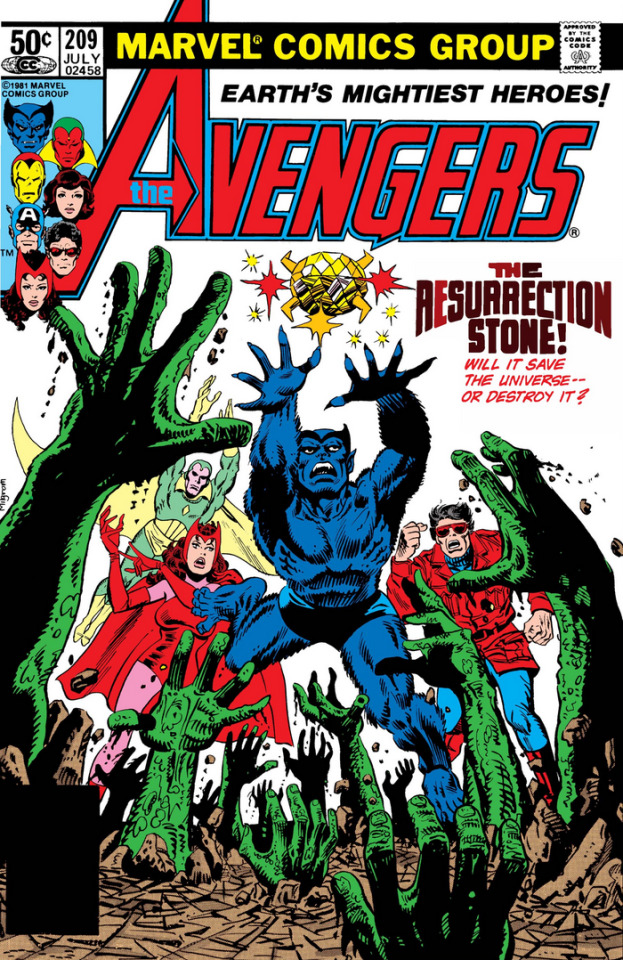
July, 1981
“The Resurrection Stone: will it save the universe -- or destroy it?”
Well, the universe hasn’t been destroyed, at least circa the comics I read this morning. But it hasn’t really been saved either.
Still, pretty intriguing tagline. Pretty intriguing cover.
And written by J.M. DeMatteis. One of the Kraven’s Last Hunt guys. He doesn’t seem to do a lot of Avengers.
Let’s see how he do Earth’s Mightiest Team of Specifically This Four On the Cover.
We start with some silent intriguing intrigue as an alien ship crashes into Nevada and an alien crawls from the alien wreckage. Instead of distributing rings to people, he gets shot by a green guy who likes purple. I sure can’t think of several people that this applies to.
The shooter checks some possibly alien PDA but then beams up as the ship explodes.
How baffling.

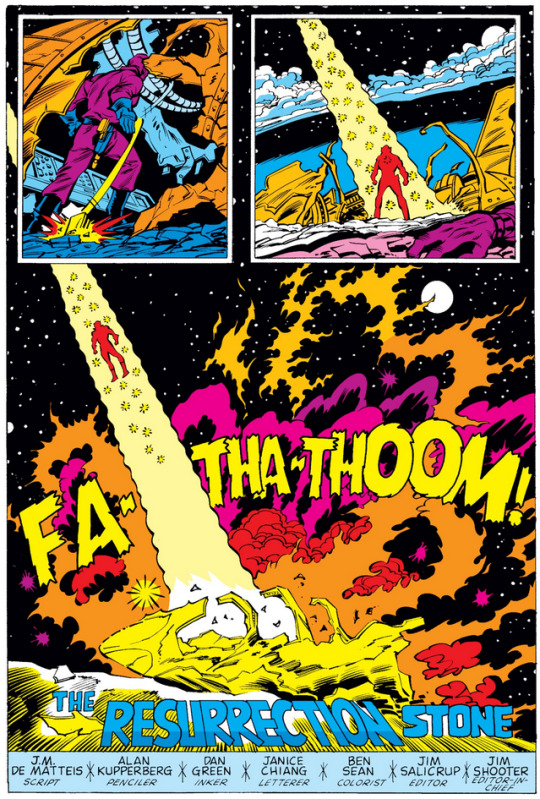
Ok, J.M. DeMatteis. You have my interest.
So we start chapter one-
Chapter one? What is it with fill-ins and putting chapters in Avengers books. That three dooms one from a while back also did this.
Anyway, chapter one of this normal length Avengers adventure: “Love... and Death!”
So on specifically April 10th, 1981 2:17 PM (a fact which we must firmly ignore in these sliding timescale days), Beast has brought an old flame to Avengers Mansion to meet Wonder Man, Vision, and Scarlet Witch.

Presumably all of the other Avengers couldn’t make it. Or Beast didn’t want them meeting Vera.
Oh, and she’s not a new old flame.
Vera Cantor goes back to X-Men #19 in 1966. She knew him before he blue it! And she was the one who got away because mutant biz kept getting in the way.
But they had a chance meeting in a Soho bar and they’re giving it another shot!
I guess Beast is finally settling down from his wild party dating multiple women at a time days.
And y’know what? He and Vera are cute together.
Beast is exuberantly in love with her. He’s apparently been talking about nothing else for weeks.
Scarlet Witch: “Vision -- just look at the Beast’s eyes -- I’ve never seen them sparkle so. He must be in love.”
Beast is so excited he’s bouncing on the couch and jumping all over the place and bumping into Jarvis. Knocking the tea tray out of the butler’s hands.
Beast, pls. Reign in.
He does manage to catch the tray in his feet though. No spilling.
Its a bit weird that Jarvis is here to be bumped into. He’s supposed to have one of his days off to visit his mom and get some of that “near-mythical Yorkshire pudding.”
But he brushes off the question with concern over the bad impression all of this is giving the guest.
Vera doesn’t mind though. She’s used to his obstreperous (“noisy and difficult to control”) nature and finds how energetic he is to be part of why he’s so cute.
The blue fuzz surely does not hurt!
Oh. And then Vera takes a sip of the tea Jarvis brought and immediately keels over dead.

The butler did it??
Jarvis. You made it too strong!
No, no. Surely not. Jarvis would never make such an error or miss out on Yorkshire pudding.
“Jarvis” is actually... A SKRULL!
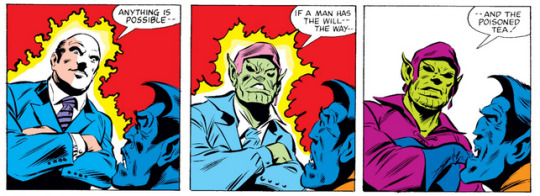
Beast wastes no time slamming the Skrull into the wall but said Skrull says ‘hey you want the woman to live again maybe keep your hands to yourself.’
And Beast backs off, sensing some truth in the Skrull’s tone.
The Skrull: “Ah -- that’s a bit more like it. Even in this vile atmosphere, I do so value my ability to breathe!”
By the by the by, this guy goes unnamed until 2008 in a Secret Invasion infobook but I’m not about that. His name is Jaddak.
Jaddak channels his inner-Darkseid and sits in the comfiest chair provocatively and begins on THE TALE OF THE RESURRECTION STONE!
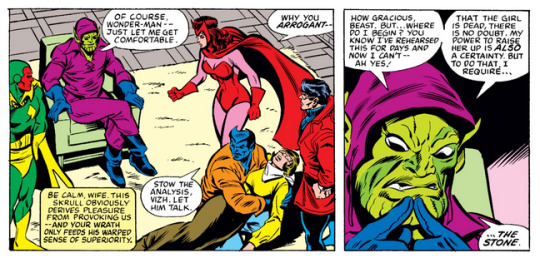
Seems that millennia ago there was a space civilization in space that merged high science and high sorcery to bring an epoch of peace and plenitude to all then known worlds.
The epoch of peace and plentitude looks a lot like someone jammed Medieval knights and castles into rocket times.

Which I guess fits the whole union of science and magic thing.
And then the greatest scientist-wizard, Tus'Au, invented the Resurrection Stone and ruined everything.
The stone, as the name implied, could bring life back to the dead. And while that doesn’t seem too impressive by today’s standards where plot devices to resurrect the dead are so numerous (including just teleporting out of heaven) that it doesn’t bear counting, remember that this was an earlier, more innocent time. A filler time.
Everyone wanted this Resurrection Stone and a great war ignited that eventually ruined a thousand, thousand planets.
Amidst that nonsense, the stone itself was lost forever.
Until an Anthigorite archeologist named Krru, like, did some serious research. Around about 5,000 years worth of research. And thanks to all his book learning, he eventually found the stone.

Which was unfortunate because Jaddak had been stalking him this whole time, sure that he’d eventually find it.
He chased Krru over twelve solar systems, finally blasting him out of the sky over Earth. But when Jaddak searched Krru’s ship and checked the recorder-log, as we saw in the opening two pages, he learned that Krru had decided that the Resurrection Stone was inherently corruptive and should have remained lost.
You know an ancient magical stone is bad news when an archeologist goes ‘actually you don’t belong in a museum.’
So when Krru was shot down, as a last ditch effort, he broke the stone in two and sent both halves into Earth’s past so they’d be lost forever.
I have so many questions.
If they were sent to the past then they’d be in the present now unless destroyed in the past. That’s how time works.
Two, dick move, Krru. You think this thing is inherently corruptive and you drop it into Earth’s past, possibly altering the timeline? Fuck you.
But with the stones in the past forever inaccessible clearly, Jaddak decided, hey this should be the Avengers’ problem and not mine.
Jaddak: “I knew then that I needed... pawns. Powerful pawns.”
Wonder Man: “Pawns... as in -- Avengers. And that’s why you struck down an innocent woman?!”
Jaddak: “It seemed a splendid idea at the time!”
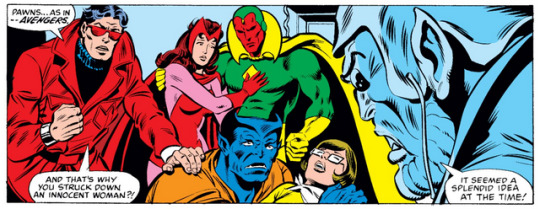
Pffffffft.
Ok, I know. I know. This is a terrible situation in-universe but also out of universe because they brought back Vera only to immediately stuff her into the fridge.
But this skrull going ‘look it seemed like a good idea at the time’ cracks me up.
Seemed like a good idea doesn’t cut the mustard with Wonder Man who just hauls off and punches Jaddak into the bookcase.
Vision even verbally pats him on the back for it.
Vision: “Well played, Simon. -- There was no need to listen to this madman's rantings any longer.”
But as the Avengers congregate to stomp on Jaddak’s head a few times, I presume, Beast stops them.
Cradling Vera’s body he says he’ll do anything to bring her back.
;__;
And that brings us to chapter two: “DOOM in the DARK AGES!”
Let me just get ahead of any hypothetical questions I wouldn’t even be able to hear until after the fact anyway. Tragically Doctor Doom does not show up.
Whoof, a lot of exposition at the beginning of chapter 2. Because a lot of stuff happened off-panel, between pages.
Real Jarvis had been contacted to make sure he’s okay. The four Avengers took a Quinjet to the Fantastic Four and told Reed Richards what’s going on. Reed went ‘sure I’ll lend you Doctor Doom’s time machine and send you to the coordinates a SKRULL gave you.’ And Jaddak went to go wait in his spaceship with Vera’s body.
So now the Avengers are in September 16, 1348, England. Prompting Vision to start giving a lecture on the bubonic plague.
Scarlet Witch: “Darling, please. Not now.”
Save it for the bedroom, Vizh.
The locals respond, understandably enough, with hostility to the people that just appeared in thin air dressed like clowns. They call the Avengers demons and unholy creatures and tell them to tell a wizard Devlunn to fuck off and that he can’t have any more of their dead.
Wanda decides that explaining time travel and superheroes from the FUTURE is more trouble than its worth. Instead, she plays along.
Scarlet Witch: “Devlunn? We are far greater than that upstart! He is a mere wind -- we are the storm!”
And then she fires off some of her bolts to cow the villagers so she can ask if anyone wants to take her to “this weakling Devlunn.”

See Wanda figured out based on the one comment that someone toying with the dead might be linked to the half of the Resurrection Stone they’re here to find. Or one would hope someone toying with the dead has a dumb magic reason for it!
One of the villagers does volunteer to take Wanda to Devlunn.
Villager: “I pray you four are as powerful as you appear -- for it will take great magicks indeed to best this lunatic child.”
Because, yup, Devlunn is a ten-year old child.
And yup, he has half of the Resurrection Stone.

He also has a big crowd of locals begging him to return their dead since they did promise to follow him and give him all that they own. Really, that’s a fair trade for some moldy old corpses, right?
Devlunn: “Why should I listen to you? When this talisman fell from the sky and whispered to me -- I knew then it could make me a god! And gods do as they please!”
Welp.
Beast: “No one should play god, Devlunn. -- Least of all obnoxious little boys! C’mon guys -- let’s get this over with!”
And Wonder Man punches the tower Devlunn is standing on and Vision SOLAR BEAMs it and a ten year old child falls off a tower.
And then he just stops in midair and floats.

Not sure why the Resurrection Stone also has flying powers. That seems beyond the scope of what it was designed to do.
That’s like if you had a scroll of fireball that also did your taxes.
Yes, that would be amazing. But the two things aren’t related things.
Anyway, Devlunn takes these four weirdos in stride.
Devlunn: “Ah -- so I’ve impressed you with my little trick! Good! For, you see, I know who you are! You are spirits from heaven to test me to see if I’m worthy of godhood -- to see if my talisman can do more than merely hold me on high like some wingless bird! You wish a show of strength -- a little play! And what you wish -- Devlunn-the-god shall grant!”
And then he sicks a horde of zombies on the fearless foursome.
The four realize the truth of Devlunn’s half of the Resurrection Stone. Because this is a cool magic artifact that conceptually splits in half instead of just physically or in terms of output or whatever.
Devlunn’s half gives life to the dead but only life without the spark of the soul. Aka, zombies.
Also, not very impressive zombies. They’re more pitiable than formidable. And Devlunn isn’t much of a necromancer.
The Avengers fight them. Well, except for Vision. Vision just lets them flail against him ineffectually.

Beast rushes through the pack of zombies, even grabbing one with his thighs to toss out of the way?, towards Devlunn and then takes the 1/2 Resurrection Stone like candy from a baby.
Revealing Devlunn to not be a great and powerful wizard but rather a very sad child.

Devlunn: “My stone give it to me! Give it back, I say! I was... nothing until it came to me! My family -- my friends -- all died! But the stone made me important! It gave me control over death! It made me safe! Please give it back! Please -- I want to be a god! I have to be a god!”
And then he collapses to the ground and starts crying while the Avengers are whisked away into the future by Reed.
So, that’s sad.
And I don’t imagine chapter three (“Rosenblatt’s Dance!”) is going to be any cheerier.
It’s now April 13, 1945. Dachau.
So. Yeah.

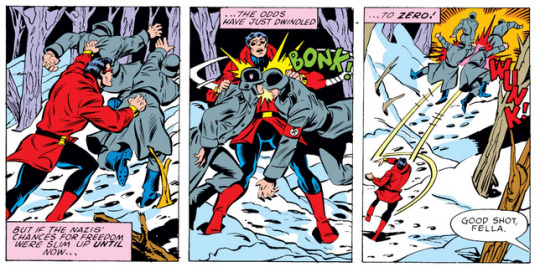
The Avengers blink into existence right in the middle of some Allied troops chasing some Nazis. And not being ones to miss a chance to go ape shit on some Nazis, Wonder Man goes ape shit on some Nazis.
Unlike the dark ages peeps, the Allied soldiers see some random people with superpowers wearing bright clothes and go ‘ah, superheroes’ and ask if they’re with the Invaders or the Liberty Legion.
Wonder Man: “Right. I’m... uh... Captain America.”
Phew. Timeline secure.
Anyway, they’re glad to see some superheroes because they’ve got a messy situation at Dachau. And its nothing that punching Nazis can fix.
So, yeah this is set at a concentration camp so its not going to be particularly happy.
The one who has the other half of the Resurrection Stone is a man named Rosenblatt. And this half of the stone also has half the power of the full stone. But in this case it returns the soul to a lifeless husk.
And Rosenblatt has used it to revive his dead wife and daughters and he’s joyfully dancing with their lifeless bodies while they beg him to let them go and free them of this existence.
It’d be really messed up if the usual superhero methods had to be applied here but thankfully the less employed but still common superhero empathy is in the quiver.
Beast approaches the guy and just talks to him.
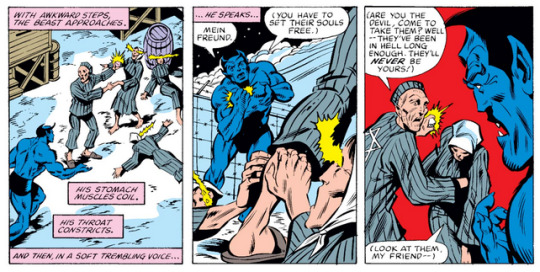


Beast: “You have to set their souls free.”
Rosenblatt: “Are you the devil, come to take them? Well -- they’ve been in hell long enough. They’ll never be yours!”
Beast: “Look at them, my friend -- they will never be yours either. Not the way you knew them. The way you cherished them. Give me the jewel. P-please...”
And his words get through to the man who hands the half Resurrection Stone off to Beast.
And as before, the instant they have the stone, Reed yanks them forward in time.
Y’know. This only occurred to me on my second read. Maybe if Reed hadn’t instantly pulled them out of that time, it would have occurred to Beast ‘hey wait I have both halves now, I could combine them and bring this guy’s family back to life for real and not in some cursed half existence.’
Doesn’t really work with how the book goes, but it’s a thought.
And now for the thrilling conclusion: Chapter 4 The Cost!
April 10th, 1981, SPACE.
So we’re back in the then present.
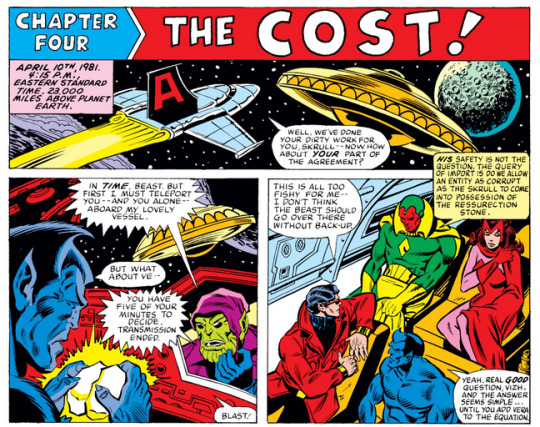
A Quinjet flies into space, as Quinjets can apparently do, to meet with Jaddak’s spaceship. Jaddak contacts them over the space Zoom and tells Beast that he’ll have to teleport over alone with the Resurrection Stone.
The other Avengers think this is reeeeeaaally fishy and don’t really like the idea of letting Jaddak get the Resurrection Stone but they can’t tell Beast what to do. This is his weird fill-in issue quest and it has to be his decision.
So Beast teleports over alone. And finds himself in a chamber with a video screen. Skrull ain’t taking any chances.
He’s hidden behind an unbreachable wall. Through the video screen he tells Beast to deposit the stone in a portal which will send it over to the skrull who will test it for authenticity.
Then, he’ll use it to revive Vera. Swearsies.
Beast: “And why should I trust you?”
Jaddak: “Because I am a Skrull. Treacherous and savage as my people are -- we value honor more than life.”
Doubt.
Beast pauses to consider the power of the Resurrection Stone. Thinks about Devlunn and his zombies and Rosenblatt’s dance.
Beast: “Vera... I’m sorry. But this power is too much for any man to hold. I hope you can forgive me for what I’m about to do -- and I hope I can forgive myself!”
And then Beast slams the two halves of the Resurrection Stone together, KRUNCHing them into dust.

Jaddak: “Y-you crushed it! But that is... impossible! My plan was perfection! The vagaries of human love should have assured me victory!”
Wonder Man: “There are higher forms of love, Skrull -- but don’t strain your brain trying to figure out what they are!”
Because, yes, Wonder Man, Scarlet Witch, and Vision are also here now.
Vision intangibled onto the ship while Jaddak was distracted and used Jaddak’s own teleporters to bring the other two aboard.
As for that unbreachable wall?
Nah. Totally breachable. Wonder Man peels it open like nothing.
Jaddak tries to use Vera’s dead body as a hostage but Scarlet Witch blasts the gun apart in his hands with a SQUAKK.
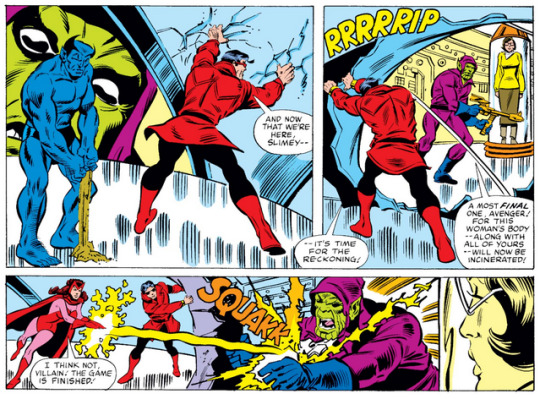
So there may be a bird that used to be a gun loose on the ship.
And that just leaves one thing to take care of.
Beast jumps at Jaddak and starts slamming him around.
Scarlet Witch protests that Beast is going to kill Jaddak but Wonder Man tells her that Beast has to left off some steam.
Wonder Man: “He has to vent some steam or he’ll really snap! Besides you know Hank as well as I do -- that Skrull will get some much-needed lumps -- but that’s all!”
Beast: “Yeah. That’s our Beastie. A hero to the end. Can’t even bring myself to play the old ‘eye for an eye’ game. Not that it would do me one stinking bit of good. I’ve lost her -- forever.”
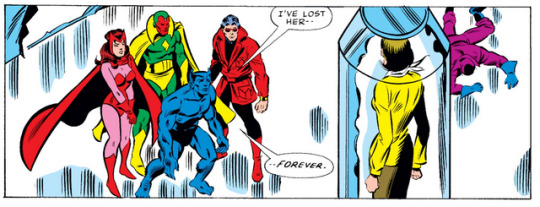
AND THEN AN EPILOGUE. Later that day at the Baxter Building.
Reed has been involved between panels this whole story and now he gets exposition exposited to him to fill in the gaps and in return he’s going to exposit too.
Wonder Man explains that he, Wanda, and Vision always intended to destroy the Resurrection Stone if Beast went through with the deal with Jaddak. Not that they thought he would. Knowing Hank McCoy and all.
But its a subversion of the ‘this is something he must do himself’ trope. Where they left the decision in Beast’s hands but also planned to go over his head if he made the wrong decision and put the scary power of phoenix down in the hands of the Skrulls.
Gotta keep your friends honest or something.
So now Reed has news. Weird news about Vera.
The poison that Jaddak used was super rare, so rare that Jaddak didn’t even know how it worked. He just had to be a murder hipster and goofed up.
Its actually a slow-acting poison that takes days to fully kill someone so Vera is technically only mostly dead. She could theoretically be cured one day.
So Reed has thrown her into a suspended animation tube and hopes to come up with an antidote eventually (which he doesn’t but Vera ends up cured anyway in Defenders #105 about a year later in another story by J.M. DeMatteis).
What is it about weird filler stories and having someone end up in a freezer tube to be maybe cured later?
Reed Richards: I know it’s not much of a chance, Beast -- but at least there’s hope.”
Beast: “There’s hope -- !”

Follow @essential-avengers because one day I’ll be up to date on that blog and it’ll have Essential Avengers stuff and no miscellaneous reblogs of other stuff. Wouldn’t that be nice? Maybe? Also like and reblog if you like to reblog.
#Avengers#essential avengers#Beast#Wonder Man#Scarlet Witch#the Vision#skrulls#essential marvel liveblogging#geez beast's focus issues are always so weird
8 notes
·
View notes
Quote
THE CHRONICLE CHAPTER I. BALKAN EUROPE 1. THE EUROPEAN WAR AND AFTER Observe now your own epoch of history as it appears to the Last Men. Long before the human spirit awoke to clear cognizance of the world and itself, it sometimes stirred in its sleep, opened bewildered eyes, and slept again. One of these moments of precocious experience embraces the whole struggle of the First Men from savagery toward civilization. Within that moment, you stand almost in the very instant when the species attains its zenith. Scarcely at all beyond your own day is this early culture to be seen progressing, and already in your time the mentality of the race shows signs of decline. The first, and some would say the greatest, achievement of your own "Western" culture was the conceiving of two ideals of conduct, both essential to the spirit's well-being. Socrates, delighting in the truth for its own sake and not merely for practical ends, glorified unbiased thinking, honesty of mind and speech. Jesus, delighting in the actual human persons around him, and in that flavour of divinity which, for him, pervaded the world, stood for unselfish love of neighbours and of God. Socrates woke to the ideal of dispassionate intelligence, Jesus to the ideal of passionate yet self-oblivious worship. Socrates urged intellectual integrity, Jesus integrity of will. Each, of course, though starting with a different emphasis, involved the other. Unfortunately both these ideals demanded of the human brain a degree of vitality and coherence of which the nervous system of the First Men was never really capable. For many centuries these twin stars enticed the more precociously human of human animals, in vain. And the failure to put these ideals in practice helped to engender in the race a cynical lassitude which was one cause of its decay. There were other causes. The peoples from whom sprang Socrates and Jesus were also among the first to conceive admiration for Fate. In Greek tragic art and Hebrew worship of divine law, as also in the Indian resignation, man experienced, at first very obscurely, that vision of an alien and supernal beauty, which was to exalt and perplex him again and again throughout his whole career. The conflict between this worship and the intransigent loyalty to Life, embattled against Death, proved insoluble. And though few individuals were ever clearly conscious of the issue, the first human species was again and again unwittingly hampered in its spiritual development by this supreme perplexity. While man was being whipped and enticed by these precocious experiences, the actual social constitution of his world kept changing so rapidly through increased mastery over physical energy, that his primitive nature could no longer cope with the complexity of his environment. Animals that were fashioned for hunting and fighting in the wild were suddenly called upon to be citizens, and moreover citizens of a world-community. At the same time they found themselves possessed of certain very dangerous powers which their petty minds were not fit to use. Man struggled; but, as you shall hear, he broke under the strain. The European War, called at the time the War to End War, was the first and least destructive of those world conflicts which display so tragically the incompetence of the First Men to control their own nature. At the outset a tangle of motives, some honourable and some disreputable, ignited a conflict for which both antagonists were all too well prepared, though neither seriously intended it. A real difference of temperament between Latin France and Nordic Germany combined with a superficial rivalry between Germany and England, and a number of stupidly brutal gestures on the part of the German Government and military command, to divide the world into two camps; yet in such a manner that it is impossible to find any difference of principle between them. During the struggle each party was convinced that it alone stood for civilization. But in fact both succumbed now and again to impulses of sheer brutality, and both achieved acts not merely of heroism, but of generosity unusual among the First Men. For conduct which to clearer minds seems merely sane, was in those days to be performed only by rare vision and self-mastery. As the months of agony advanced, there was bred in the warring peoples a genuine and even passionate will for peace and a united world. Out of the conflict of the tribes arose, at least for a while, a spirit loftier than tribalism. But this fervour lacked as yet clear guidance, lacked even the courage of conviction. The peace which followed the European War is one of the most significant moments of ancient history; for it epitomizes both the dawning vision and the incurable blindness, both the impulse toward a higher loyalty and the compulsive tribalism of a race which was, after all, but superficially human.
LAST AND FIRST MEN A STORY OF THE NEAR AND FAR FUTURE by Olaf Stapledon
http://gutenberg.net.au/ebooks06/0601101h.html
2 notes
·
View notes
Text
Anthropocene: A Very Short Introduction
A summary of key concepts in Anthropocene: A Very Short Introduction by Erle C. Ellis. (Just some book notes, because tumblr is simply There and this all would otherwise go on post-its)
The Great Acceleration c. 1950
Ecosystem Engineers and Biotic Homogenisation
The Pristine Myth
The Anthropocene: rambunctious garden, the Homogocene, Anthromes
Natural Historical Base Levels and the Antropocene GSSP
1. The Great Acceleration c. 1950
The Great Acceleration is the 'dramatic jump in the rate of human and environmental changes' with a 'striking inflection point around 1950'. Steep to exponential growth across many parameters.
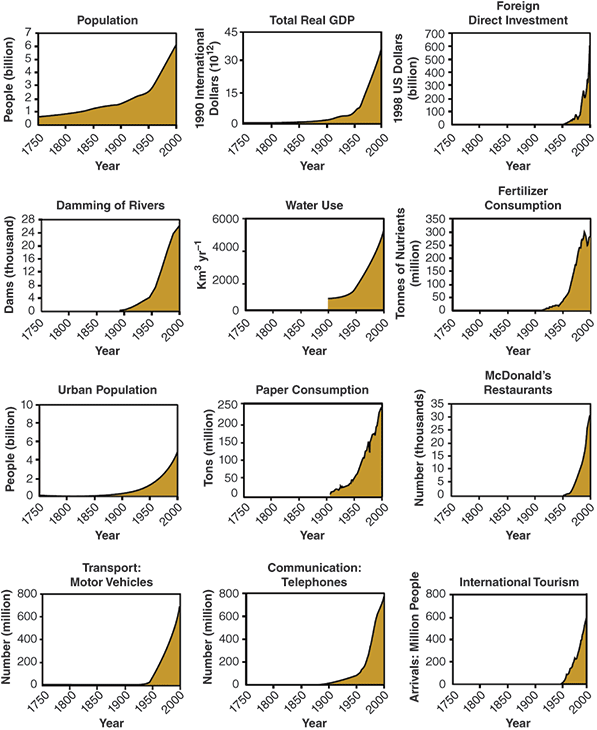

Starting in the 1950s humans have shifted Earth systems into a new and unprecedented state beyond their range of natural variability. This is a no–analogue state (i.e. there is no equivalent in the geological record, where some predictability in climate variations can be derived from Milankovitch cycles and the Faint Young Sun Paradox and so on). This is what the Anthropocene is founded on.
Climate Context: major climate shifts i.e. glacial–interglacial transitions are normal in the Quarternary period (2.6Ma to present). The Holocene epoch (11.7ka—c.1950) is interglacial, and 'an island of climate stability in a sea of extremes'. Glacial–interglacial regime shifts are bi–stable and cyclical but there are also one–way regime shifts (e.g. after Earth's biogenic oxygenation, after major volcanic eruptions).
The Holocene to the Anthropocene is one such change, known as a tipping point: the Earth system permanently leaves the stable Holocene climate state and tips into the new, less stable Anthropocene.
2. Ecosystem Engineers and Biotic Homogenisation
'All organisms alter their environments merely by taking up space' but 'some species, known as ecosystem engineers, have even greater effects' via niche construction, where organisms alter their environments to reproduce the ideal environmental conditions they must live in (e.g. earthworms, beavers).
Humans are the ultimate ecosystem engineers — 'the development and accumulation of modern human behaviours marked a major long-term shift in human capacities for niche construction.'
The single largest environmental change wrought by humans has been via agriculture.
Ancient agriculture and anthropogenic soil production: early civilisations have altered soils e.g. Europe's manure–enriched 'plaggen' soils, the Amazon's charcoal enriched 'terra preta' soils, and various anthrosols altered by tilling, irrigation etc (>4000BCE).
Globalisation and the transition from 'old world' to 'new world' societies resulted in the proliferation of independently evolved species across all human–inhabited continents (crops, livestock, etc). This has resulted in biotic homogenisation – ecosystems have been affected at the species level by globalisation
3. The Pristine Myth
Humans have very dramatically altered patterns of flora and fauna in the last 50,000 years (not just industrially from 1950). The idea that pre–industrial environments are untouched and pristine is misrepresentative.
Hunter Gatherers and the Extinction of Megafauna: Extinctions of large herbivores like the woolly mammoth transformed grasslands into woodlands (late Pleistocene to early Holocene). Mega-herbivore hunting and ancient agriculture (e.g. altering soil geochemistry) resulted in woodland generation.
Dense woodland is therefore not an untouched pristine habitat (as we might imagine it). It is the result of long term management by earlier agrarian and preindustrial societies.
'The Pristine Myth—that places without humans today represent an ecology without prior human influence—is now recognized as a serious barrier to understanding contemporary ecological patterns and processes.'
4. The Anthropocene: rambunctious garden, the Homogocene, Anthromes
'Life still thrives in what writer Emma Marris has called the rambunctious garden of the Anthropocene, in which novel ecosystems form the new wild.'
Global mixing of species and biotic homogenisation: proposed term the Homogocene; 'humans are taking the rest of the biosphere with them'
More than 75% of the terrestrial biosphere has been transformed into anthromes, or anthropogenic biomes.

'Human societies are far more than a disturbance to an otherwise natural world. Human social systems have emerged as a planetary force within the Earth system—an anthroposphere that is actively shaping and sustaining an anthropogenic biosphere.'—'Human and natural systems are globally telecoupled.'
Demographic transition model estimates human populations will level off at 11 billion but we are already exceeding Earth's biological carrying capacity—an unsustainable overshoot to 1.6 Earths.
For nine global environmental variables, exceeding 'safe limits' could lead to unacceptable environmental changes. Exceeded so far in biodiversity loss, climate change and the nitrogen cycle.

[Chapter on the politics of the Anthropocene. Was filled with too much general fury and futility to even attempt notes, but for these few highlights:
'Capitalism, not industrialization, caused Earth’s transformation by producing massive social inequalities that supported audacious strategies of global conquest, endless commodification, and relentless rationalization' plus a little bit about capitalism, colonialism and patriarchy being the complicit trio in Anthropogenic climate change.
'Is the Anthropocene a critique of the narratives of freedom?’ The asking of such a question exemplifies just how far the concept of the Anthropocene has travelled beyond its origins in the natural sciences'
'In the words of geologist James Scourse: while the anthropocenists rearrange the deck chairs, other scientists are getting on with the business of trying to understand, and do something about, the crisis we face']
5. Natural Historical Base Levels and the Antropocene GSSP
Humans have wrought many changes on Earth systems over their species lifetime; at which point do we then define the Anthropocene with a Global Boundary Stratotype Section and Point (GSSP)? (Has to be recognisable in the rock record; 1950 seems to be the favourite.)
50,000–10,000 BP: Megafauna extinction
11,000–6,000 BP: Ancient agriculture
5,000-500 BP: Homogocene, biotic homogenisation
1950: The Great Acceleration
#book notes#a very short introduction#anthropocene#just a quick summary so I do not forget new (and old) concepts#on revision: not so quick after all! two hours spent on a book already read#I have so many more to do
0 notes
Text
Character List
Current Games:
DM | Armor of the Epoch | PBP
My first time dming. Five characters are hunting down pieces of an ancient and powerful set of armor that have scattered across the continent. The problem is, many other people are too.
Ilya Ivanova | Einsamwald | PBP
Level 6 Human Arcane Archer Fighter.
Current Captain of the Oakenshields, the guards of Oakenfell, has a magic bow named Oakhart, and is about to leave their home forest for the first time on a quest to save the world.
Lina Khaldir | Chatsborough | PBP
Level 8 Dhampir Totem Barbarian.
SUCH a bitch, is a vampire and has been for a very long time, does whatever she wants because she has the power to back it up, has a magic tattoo and a switchblade.
Finished Games:
Nina “Devo” Devoleth | Pirates | Voice
Level 6 Water Genasi Coast Druid.
The first character that I played consistently, probably an alcoholic, had a secret fiancée, trying to figure out what her goddess wants and why she put a magic tattoo on the back of her neck and gave her powerful elemental magic, went to prison but not her fault
Yenran Shandalar | Magic Sword | Voice
Level 12 Stars Druid/Level 2 Seership Cleric Kalashtar.
The most emotional I have ever gotten in dnd, fully cried during the last combat because she brought her best friend back and then died shortly after, my first permadead pc, but it was not in vein because we WON
Zariuk | Evil&Evil | PBP
Level 8 Fallen Angel Witchblade Rogue.
From a homebrew supplement, liked poison and knives, killed a lot of people, was in a game called evil and evil what did you expect,
Miscellaneous Characters:
Jericho | Test Combat
Level 15 Changeling Vengeance Paladin.
No real backstory because Jericho is for a test combat.
Alex Delgado | Never played, but was built for a college based oneshot
Level 11 Tiefling Battlemaster Fighter.
HUGE jock, was truly so dumb, ace of the school’s volleyball team
Clay MacIntyre | New Ghame Plus
Level 3 Eladrin Moon Druid.
This guy is a cowboy. That is all at this time.
1 note
·
View note
Text
The Wonders of Our Sinful Nature
I have a question for you. How many times in your life have you been called a sinner with any real sense of seriousness? Whatever your answer is, from one to ten thousand and one, I can assure you that it hasn’t been anywhere near enough. Quite naturally, the modern mind will reel from such a proclamation, as it believes by right that it has been born upon the high ground, acting as if it has always held the superior position of power and vision. This subtle arrogance is a tremendous disaster for the soul, for the human experience, and for the cosmos as a whole.
Of course, I am not talking about sin as you might have heard it set within some religious or philosophical architecture. While the nature of that framework is certainly another matter altogether, I can assure you that the word sin as we have popularly defined it was as absurd thousands of years ago as it is to you now.
In other words what I am about to say to you now isn’t new. This is isn’t some hip and trendy insight from a weak soul caught up in the spin and tumbling of in the gravity of his epoch. No, from the very first time the word sin was used, it was never intended to signify that we are dirty and ugly and weak, or that we have somehow committed a crime against the divine by being at all. I know this because the word sin originally wasn’t a word that had anything to do with religion. It was an archery term.
To sin is a technical term that means to “miss the mark”. It was a way of referring to the missed shot, and a way of bringing into the light the process by which the wayward arrow that has not found the target. It doesn’t take much to see how this term could be misappropriated in service of the dogmatic and ideologically possessed mind. The distance between the word sin having originally meant the missing of a target, to the world sin now coming to imply the committing of a crime, is really quite small. As such, it doesn’t take much imagination (and even less personal experience) to see our tendency to leap quickly and with a great enthusiasm over such a chasm.
The real question is, what is the nature of this gap? Why do we, even when the originating reality of the term sin has been revealed to us, do we choose to go about actively ignoring the inherent and informing nuance around that reality and instead choose to enforce the error? The reason is actually quite simple: our spiritual teachers aren’t master archers, and regardless, we the masses, don’t have any interest in difficulty of something like archery. So, we line up, sit down, or hunch over a screen to be educated in the realities behind of the missing of a target by someone who has never knocked an arrow for themselves. You see, we have been repeatedly held hostage by those of us who are not, or will ever be, masters. And we willingly submit because we would rather submit to them, then to the process of anything resembling a path to a mastery for ourselves. This willing submission to our weaknesses takes off the pressure, granting us the bland alleviation that descends only to the dull and stagnant not-yet-a-soul. However, as stagnant as we may get, our hearts fight back, and rebel. We all know something is deeply wrong, but the pain of this awareness is too much, and so we are forced to leaping over the edge of one side of the gorge, to reaching desperately for the other. Once we have made that jump, and once our fingers have clung, then sin becomes something else entirely: a symbolic object of blame, very much having the nature of the (poisoned) arrow. This way, the suffering that we feel has both an easy diagnosis and cure: them. They. Him. Her. It. You hurt because “they” are sinners, full of grease and decay. Then, when you have yourself been caught unable or unwilling, then you can write yourself off in very much the same way. You say, “This is expected, for I am corrupted by nature. I haven’t the choice here. I am as I am”. Of course, this doesn’t change the fact that when you have been offended or hurt by someone else, you must hold them to account, and take them to task for their error. You demand “they” be different.
We are this way because we haven’t been taught very well. Our systems of education within our religions, cultures, and sciences have been utterly blinded by the very software it has sought to inform. To put it another way, the theology of sin will always be corrupted because our own ontological experience must itself always arrive through sin. That is to say, our being, from our first day on this planet to our last, is something that must be negotiated out of a surrounding reality we don’t understand very well. All of us must learn because all of us are born ignorant. We are born with every kind of desire and urge and need, most of which we act blindly in service of, and we don’t see very clearly that these drives cannot find satiety or fulfillment without a profound form of submission. We want to eat, but we need to farm, hunt, or buy (sell our time). We want to have sex, so we need to compromise ourselves to find and maintain a suitable mate. We want to be happy, so we go to the movie theatre (money), take a hike (time and effort), or lose ourselves in the company of loved ones (compromise). Each of these things requires a process, which is itself not unlike the shooting of an arrow, and like the shooting of an arrow, they will miss. A lot. If you practice of archery, your arrows will miss thousands of times before you can begin to group them around your mark at will. It will then take many thousands more until you can split your arrows by instinct.
You see, by using a term from something simple, universal and incredibly difficult, you can speak directly to the soul whose main function is to grow and learn. Only the soul who has learned to submit themselves to the sinning process will ever find a mastery of that sin. It can never happen for someone who has exiled the reality of sin to something that is philosophical or theological. To do this is to commit a very dangerous sort of sin because it is the missing of the mark by the refusal to raise up your bow in the first place. In most religious circles, this has been paraded about as something virtuous, but there is no virtue in casting down the bow into the dirt and snapping the arrow over your knee.
The entirety of the religious traditions (including that of science), and thus the resulting cultures, have been corrupted by this one terrible mistake. A misreading of that one word and the resulting ideas that follow it as they occur throughout the ancient literature will blind the reader not only to the narrative itself, and the teachings within, but what is far more tragic, you will miss the very reason for it being there at all: you. That is, the realization of a human soul that has come here, now, despite the apparent impossibility of that reality.
Archery, and any complex participatory endeavor for that matter, is the exploration of the reality of being held to account against the substrate in which it must exist. Here you are: you want the bullseye, but you will always find yourself unable. Even as a child, you come to understand that reality doesn’t serve you. Your wanting isn’t enough, not now, not ever, but it will direct you. If you are wise, that wisdom will have you pointing your arrows at the archery range, and therefore ultimately at yourself. If you are arrogant, that arrogance will have you pointing your finger instead, at this, at that, at whatever takes you away from the real. In other words, you have no choice but to take aim at something. Therefore, you cannot miss a target intentionally, you can only choose another target.
So what now?
Find your mark, and then, with all of your courage, pick up and knock the arrow. With the entire strength of your heart, draw the fletching to the skin of your face. Aim with love, attention, and care. Breathe out, and while holding gently to that stillness, simply let go. Be completely aware. Make intimate the flight and strike of the arrow with the state of your inner being. Watch how they are one. Make adjustments. Repeat. This time, do it better. Repeat. This time, even better. Repeat.
This time, be better. Repeat.
You are a sinner, so sin beautifully.
6 notes
·
View notes
Text
a memory of self discovery
They were exhausted from the seemingly eternal battle they had just waged against the demonic void being that had attempted to take the relic they worked so hard to obtain. The job had gone easy, they made it in, were able to sneak around and bypass a few traps… Some monsters were a little more difficult than the others, but they had made it. They eventually reached the final chamber and as she took the idol in her hands, an energy crackled in the room, black lightning, wind blew from the tear in void space.
The battle raged on for what felt like years, the voidsent obviously trying to toy with them, give some ground only to take it back again, pushing back and forth across that now blurred line the sand. Toward the end, Mizu felt the heat, a burning, like he was on fire, something about the proximity to this demon had sent him to a place he had never felt before in his mind. Memories of Akaisorah flashing in his vision, pummeling outward from his thoughts, as if a battering ram hammered at the inside walls of his skull. Then, he felt it. A cold, shadowy rending... A tearing, possibly a snap deep inside him. He had watched helplessly as his fists moved through the monster, as if there was some sort of connection between the two… Like a sentinel, he had held off the demon while the sorceress dealt the final blow, her aether raging inside, bristling to be released from her as she had sent a bolt of pure white light from her fingertips that sliced the entity to shreds, dissipating and being pulled back into the rift it had come from only moments before. The shrieks and abyssal screams of voidbeasts clamored throughout the halls of this long forgotten mausoleum.
Mizu was dizzy, heart racing, his head was pounding, and normally perfect clear vision was clouded, obscured. He could see white light all around him. But he also saw a crepuscular energy swirling around and compressing on his fists as he brought them up to his face. The blur was hard to shake, the blazing light coming from where he had last seen her. He blinked hard once, twice, rubbed his eyes hard and his vision cleared only a little. He could see her laying there, talisman in hand… was she burning? The flames appeared to jump from within her very soul, consuming every part of her essence. Her body was writhing as she shuddered on the floor. Mizu took a step toward his partner and fell to his knee. It was as if the weight of a thousand sandbags had been dumped on his shoulders, but he stayed firm and rose again, pushing the mountain upward and above him. He took one trudging step after the next, he felt as if he were taking steps in deep mud, slowing him down. But as he got closer to her, he could feel his strength returning. His eyes became less cloudy, he could see not just the individual flames, but each smoky tendril that emanated from her shaking body. He could see her glowing like a beacon through the murky fog, a beckoning to the airship, guiding him to land.
The aeon of him traversing the vast distance was finally at an end, the long drawn out epoch finding it’s apocalypse. He could feel a white hot glow, burning in front of him... but there was something else. An icy chill, intense and overpowering, and a shock of dark, black-lit electricity now swirling about his own body. The cloudiness returned, but he realized he was no longer in his own body. Was he in control? Could he stop what was happening, or was he merely an observer to what was unfolding in front of him. He witnessed himself kneeling and gently putting his arms under the shuddering raen, cradling her and trying to keep her from moving and thrashing about so wildly. There was a look of hunger on his face, a smile gleaming in the aetherlight, along with the glowing of his eyes that began to become more intense, his lips parted as he drew close to her. Now just a slight few centimeters away, he could see the wafting coils of aether blazing from her body, Mizu’s eyes were only half lidded now, but the glow from them was no less bright than it had been moments before, blazing within the little bit of exposed sclera.
There was a sharp tug, then a full reeling of himself being sent violently back into his body, as the fluttering tendrils began to be pulled into his being. He could feel an immense breath inward, pulling the aether directly from her, pulled up by a mystical force to his dark blue lips. There had always been a hunger, a craving never sated deep in his soul. He had always endured it, he had always assumed it was the loss of his sister and the demoniac ripping of her away from him. But no, this was different. He experienced all his sadness, fears, pain, everything that hurt him subside as he took her in. His body was invigorated by this new influx of energy he did not know he needed. He could feel her beneath him, in his arms, her body slowed it’s twitching almost immediately when he relieved her of the excess of the aether overload. He could sense her mind calming, the constant guarded feeling she held to keep it in check being soothed and relieved, he knew now what was happening. What he was, what he was becoming, he knew that it was not just any voidsent that took Akai from him, it had been their sire, their creator. He had seen this multiple times in his own hunts for voidsent, he knew what they did... what he was doing right now.
He was pulled from his thoughts, he felt something happening, a sudden shift. She started writhing again, shaking in his arms, as he held her close. He was taking too much, he experienced her emotions and she was stricken with panic, fear that instead of burning up, she would be consumed and left an empty husk. He needed to stop… He had to force himself to give up the intense feeling, the pure joy and bliss that was fueling him, the sweet taste of chilled wine and crisp apples on an early fall day. The gusts of cool wind whipping down the jagged, snow-covered mountains and tickling every single strand in the Sea of Blades.
No...
NO..!
NOOOO!!!
He ripped himself away, dropping her to the floor. He felt like he was empty again, he needed more. Where was it, the fount of aether, where was *she*. He fought with himself now as he had with the voidsent previously, but the battlefield was no longer in the temple, but deep within his soul, his spark... With a loud, guttural roar, he lifted his head and raised it to the roof of the ancient temple, the void-sent howl screeching and echoing off every wall, extending and reaching to a point out in the world beyond the rusted gates they had traversed to enter here. He felt his entirety explode and light flew from his eyes and extremities before he collapsed next to her slumping over like dead weight. He experienced it like a drop in the ocean, with a slow float downward and then his head hit, smashing on the archaic paving stones... The sorceress lay next to him as she twitched in small spasms still grasping at the corrupted and now cracked talisman.
0 notes
Text
An Excerpt from DO WE NEED GOD TO BE GOOD?
In addition to science fiction and fantasy, Castalia House also publishes thought-provoking non-fiction. Here is an excerpt from anthropologist Dr. Hallpike’s conclusive demolition of evolutionary psychology, among other things, DO WE NEED GOD TO BE GOOD?
‘Evolutionary psychologists’, who claim that our human abilities and traits are very specific adaptations to the problems of pre-historic life on the savannah in East Africa, have not faced up to the fact that we know virtually nothing about what this life involved, about the social relations and organisation of our ancestors in those remote epochs, and still less about their mental capacities. If we are going to use the theory of natural selection to explain the characteristics of any species, it is obviously essential to have a detailed knowledge of their behaviour in relation to their environment. In the case of a social species it is particularly important to observe the relations between individuals, and modern studies of chimpanzees and gorillas are obvious examples of how this should be done.
But while it is reasonable to assume that our ancestors in this remote period lived in very small groups of gatherers and scavenger/hunters, and to deduce from this that we must have been an innately sociable species for a very long time, and that some of the well-established gender differences seem to be adaptations to this way of life, it is difficult to be sure about much else. Normal science proceeds from the known to the unknown, but evolutionary psychology tries to do it the other way round.
Language is central to human culture, but we do not even know when our ancestors were first able to utter sentences like ‘Shall we go hunting tomorrow?’, and it is quite possible that they only achieved this level of linguistic ability well within the last 100,000 years or so. But without language there would have been no way of referring to the future or the past, no means of conveying information, no group planning, no way of communicating group norms and ideas of sharing and cheating, and no discussion of technology and other problems of survival. We cannot even imagine what a pre-linguistic human society might have been like. It cannot be sufficiently emphasized, therefore, that our profound ignorance about early humans is quite incompatible with any informed discussion of possible adaptations.
Even in the case of the earliest Homo sapiens sapiens from around 200,000 years ago we do not know what sort of things they might have said to each other, (or if they could have said much at all), what made them laugh, or even if they laughed, what they quarrelled about or how they organised sharing within the group. Nor do we have any idea when they first had personal names, or when they could form the ideas of ‘grandfather’, or ‘mother’s brother’, or when they developed the idea of some sort of official union between adult men and women, or if they exchanged women between bands, or how hunting co-operation was organized, or what sort of leadership existed. Nor do we know when humans first had ideas of magic and symbolism, gods, ghosts, and spirits, or when or why they first performed religious rituals and disposed of the dead in a more than merely physical manner.
Ignoring these drastic limitations on our knowledge has meant that many so-called ‘adaptive explanations’ are merely pseudo-scientific ‘Just So Stories’, often made up without any anthropological knowledge, that have increasingly brought evolutionary psychology into disrepute. For example, it has been claimed (in the Proceedings of the Royal Society no less) that more than a million years ago, early humans lost their body hair because it was full of nasty parasites, and potential mates therefore preferred partners with the least amount of hair so that it was eliminated by sexual selection. Instead of body hair, humans took to wearing clothes: ‘clothes, unlike fur, can be changed and cleaned’. We know nothing whatsoever about the sexual preferences of our ancestors a million years ago, but at least we know they could not possibly have had clothes, because these have only been around for a few thousand years since the introduction of farming and weaving. Another example of an adaptive theory, recently published in New Scientist , is obviously based on the author’s experience of living in London rather than on any anthropological knowledge about hunter-gatherers. ‘The first, and most ancient function of manners is to solve the problem of how to be social without getting sick [from other people’s germs].’ No it isn’t. If there was a ‘first and most ancient function of manners’ it would have been to reduce social friction among small groups of people who have to live and get along with one another, and a hunter-gatherer band was, in any case, the environment where one had the least chance in human history of catching a disease from someone else.
Some years previously, New Scientist also published an evolutionary explanation of nightmares: ‘In the ancestral environment human life was short and full of threats’, so that ‘A dream-production mechanism that tends to select threatening events, and to simulate them over and over again in various combinations, would have been valuable for the development of threat-avoiding skills’. Since most people wake up screaming when the threat comes, however, nightmares seem a most unpromising educational tool. And as I write, yet another evolutionary knee-slapper has appeared, in Biological Reviews, this time maintaining that men’s faces and jaws are more robust than women’s because for millions of years men have engaged in fist fights. The problem here is that we know from anthropological studies that hunter-gatherers are not recorded as engaging in fist fights but in physical conflicts typically use weapons like clubs, spears, or rocks because they are so much more effective than trying to use one’s bare hands. Boxing as such is a skill that has to be deliberately taught and is only found in a small minority of societies which makes it extremely unlikely that it was an important form of human combat for millions of years.
The second problem is that if our ancestors were so closely adapted to the environment of prehistoric East Africa, this should be able to tell us a great deal about their subsequent behaviour, especially during the last 10,000 years of maximal social and cultural change. For example, we would expect humans, in their expansion all over the globe, to have chosen environments with a discernible resemblance to the savannah of East Africa, and to have avoided those that differed markedly from it, like rain-forests, deserts, the Arctic, islands in the Pacific Ocean, and high mountain ranges. We would also expect them, after millions of years of simple, egalitarian hunter-gatherer existence in small groups, to have been strongly resistant to the formation of large-scale, highly stratified societies, and again to have had great difficulty in mastering mathematics, science, and modern electronic technology, just to mention a few glaring examples of major cultural change.
Yet we know very well that in these and innumerable other respects, human habitats, social organisation, culture, technology and modes of thought have diverged in wildly different ways from the simple model of Man in his prehistoric environment, so that evolutionary psychology has no predictive value at all in these essential respects. This alone makes it very unlikely that human abilities and dispositions were ever closely adapted to particular ancestral conditions. ‘Among the multitude of animals which scamper, fly, burrow and swim around us, man is the only one who is not locked into his environment. His imagination, his reason, his emotional subtlety and toughness, make it possible for him not to accept the environment but to change it.’
Thirdly, Man’s extraordinary intellectual abilities, in particular, raise the problem that in Darwinian theory biological adaptations can only be to existing circumstances, never to those that might be encountered in the future. We did not acquire our mathematical abilities, for example, so that thousands of years later we could be good with computers. This fundamental point about human abilities was first made by A.R. Wallace, Darwin’s co-formulator of the theory of natural selection, who had extensive first-hand acquaintance with hunter-gatherers of the Amazon and south-east Asia. He noted that on the one hand their mode of life made only very limited intellectual demands on them, and did not require abstract concepts of number and geometry, space, time, music, and advanced ethical principles, yet as individuals they were potentially capable of mastering the highly demanding cognitive skills of modern industrial civilisation if they were given the chance to acquire them. Since, as noted, natural selection can only produce traits that are adapted to existing, and not future, conditions, it ‘could only have endowed savage man with a brain a little superior to that of an ape, where he actually possesses one little inferior to that of a philosopher’.
This is particularly obvious in the case of mathematics, where even today many simple cultures, especially hunter-gatherers but including some shifting cultivators may only have words for single, pair, and many. The Tauade of Papua New Guinea with whom I lived were like this, and indeed, the hunter-gatherer Piraha of South America are described as having no number words at all, not even the grammatical distinction between singular and plural. We can get a good idea why this should be so from the example of a Cree hunter from eastern Canada: he was asked in a court case involving land how many rivers there were in his hunting territory, and did not know:
The hunter knew every river in his territory individually and therefore had no need to know how many there were. Indeed, he would know each stretch of each river as an individual thing and therefore had no need to know in numerical terms how long the rivers were. The point of the story is that we count things when we are ignorant of their individual identity—this can arise when we don’t have enough experience of the objects, when there are too many of them to know individually, or when they are all the same, none of which conditions obtain very often for a hunter. If he has several knives they will be known individually by their different sizes, shapes, and specialized uses. If he has several pairs of moccasins they will be worn to different degrees, having been made at different times, and may be of different materials and design.
What needs to be emphasised here, therefore, is that our hunter-gatherer ancestors could easily have survived without the need for verbal numerals or for any counting at all, and that consequently there could have been no selective pressure for arithmetical skills to evolve in the specific conditions of the Pleistocene of East Africa. As we all know, mathematics has only flowered in the last few centuries, and among a tiny minority of people, far too brief a time-span for natural selection to have had the least effect. The mathematician Keith Devlin very reasonably concludes: ‘Whatever features of our brain enable (some of) us to do mathematics must have been present long before we had any mathematics. Those crucial features, therefore, must have evolved to fulfil some other purpose’(my emphasis). Because we have no idea what that ‘other purpose’ might have been we are obviously not going to discover the origin of the mathematical features of the human brain from anything we suppose our ancestors might have been doing in pre-history.
Mathematics is only one particularly glaring example of a whole range of advanced human thought in logic, philosophy, and science, of a type known as ‘formal operations’, which has only emerged in literate civilisations, and is never found among hunter-gatherers. This general type of thought must therefore be the result, like mathematics, of the brain using its faculties in novel ways, which therefore cannot be traced back to African prehistory.
An Excerpt from DO WE NEED GOD TO BE GOOD? published first on https://medium.com/@ReloadedPCGames
3 notes
·
View notes